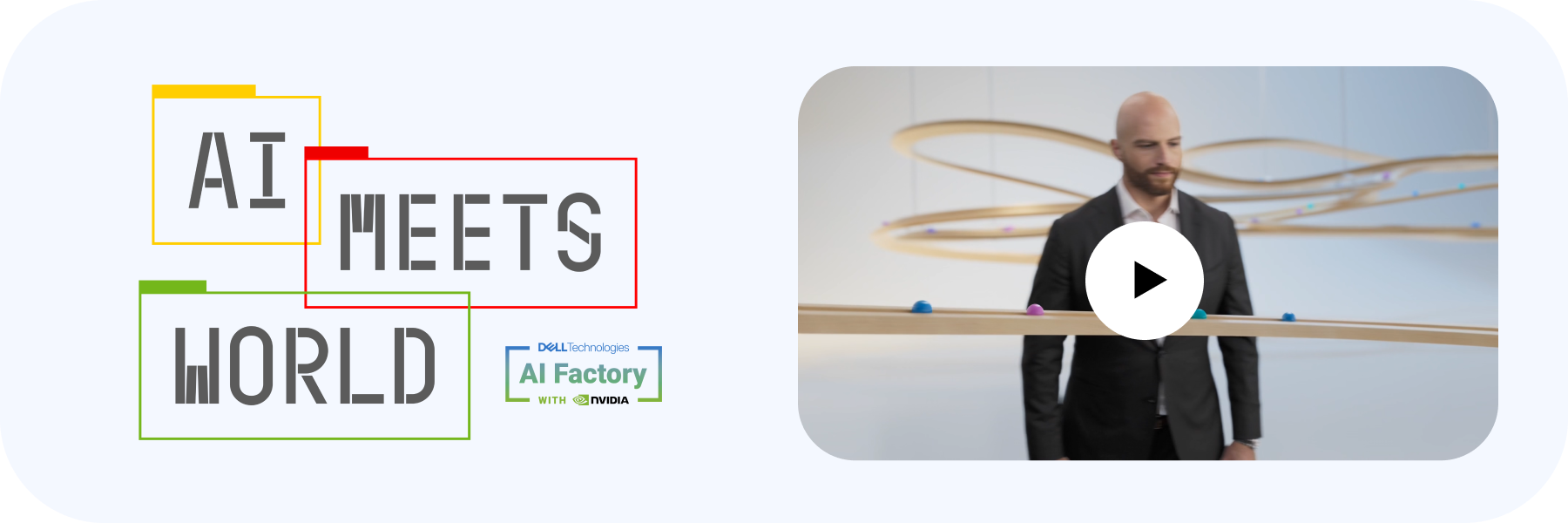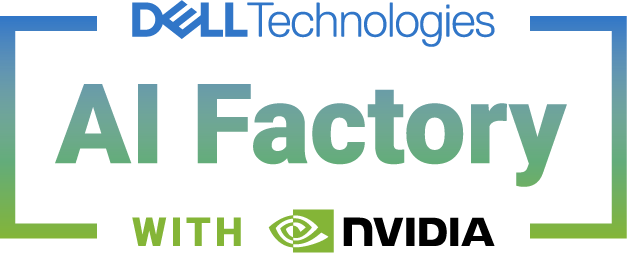Nov 8, 2024
How AI Factories Accelerate AI Adoption and Implementation — and ROI
The Challenge
Beyond the vast promise of generative AI, companies are faced with an urgent question: How can they implement the technology into their business and realize its benefits — from increased productivity to improved decision making to hyper-personalization?
Costs of development; concerns over security; and the challenges of understanding the complexities of AI deployment are leaving many companies slow to adopt AI solutions.
According to Bloomberg’s Brand Accelerator, 65% of US executives think AI will have a high impact on their organization. However, 60% believe they are still a year or two away from integrated AI adoption.
But companies can’t afford to wait. Businesses using traditional IT infrastructures and operating models must quickly build an AI foundation — or risk obsolescence.
“This moment is unlike any other big technological inflection point,” says John Roese, Global Chief Technology Officer and Chief AI Officer at Dell Technologies. “There is no five-year journey that you’re going to get to eventually. If you’re not there — or not moving toward getting there — you’re already late.”
The Impact
Rather than trying to build their own AI applications from the ground up each time they encounter a problem that could be solved through AI, companies need repeatable solutions that can accelerate AI adoption across the organization. One way is by embracing a new approach — the AI factory.
Like the manufacturing plants that powered the Industrial Revolution, AI factories will be at the heart of the AI revolution. Rather than manufacture physical goods, AI factories produce actionable intelligence and insights and bundle all the components needed to deploy AI solutions. In an AI factory, the raw material is data, the outputs are value or tokens, and the end result are the use cases that will drive the greatest business impact.
“Generative AI systems are extraordinarily good at organizing, codifying, and interpreting data,” says Roese. “The AI factory is a framework that gives you an engine that takes almost any problem you can think of with data and AI and gives you a path that gets you to the solution.”
Businesses have been slow to build their own AI engines because the infrastructure that “sits” on the AI factory floor supports accelerated computing platforms. AI technologies don’t resemble what most IT practitioners are accustomed to working with — work that needs to be done to ready the data center for this unique workload.
“A year ago, most enterprises had to pretty much assemble everything themselves,” says Roese. “But today, more and more of the technologies necessary to implement these kinds of outcomes are commercially available.”
Earlier this year, Dell and NVIDIA unveiled the Dell AI Factory with NVIDIA, the first end-to-end AI enterprise solution delivering a comprehensive portfolio of AI technologies – from the desktop to the data center, validated and turnkey solutions, and expert services to help organizations achieve AI outcomes faster. The Dell AI Factory with NVIDIA can help address some of the most impactful use cases across all industries, which include content creation, code generation, digital assistants, digital twins, computer vision, and design and data creation. The end-to-end platform enables IT teams to build an AI solution that helps these use cases become a reality in their unique environment.
Together, Dell and NVIDIA deliver solutions that are customizable for any business, in any industry, whether it’s in manufacturing, where AI can accelerate product design and engineering and improve factory or warehouse virtual integration and options. Or telecom, where the power of large language models (LLMs), trained in the local languages, is transforming the customer experience, notifying network operations of network events and supporting field technicians. Or healthcare, where multimodal LLMs are accelerating radiology diagnosis and genome sequencing, telehealth/advice chats and triage/call routing.
“Medical professionals don’t need to be AI experts,” says Roese. “They need to be healthcare experts that understand the math and the data behind it, and they need to be working with AI experts who can translate that into the systems in the AI factories to scale their expertise and prosecute a problem to get a result.”
The Takeaway
With technology moving at such breakneck speed, Roese understands why the majority of business leaders have been slow to get on the AI train. “If you couldn't figure this out a year and a half ago, you wouldn’t be alone,” he says.
But soon, every business will need a factory powering its AI journey. And the enterprises most adept at establishing their AI factories will have a critical advantage as the AI era takes off.
“It’s a very good time to lean in if you haven't,” says Roese. “And if you have but haven't moved fast enough, it’s the time to accelerate. The future is happening now.”

